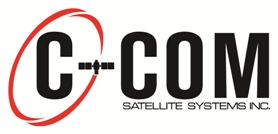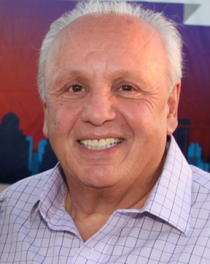














 -
-
C-
 Dr. Leslie Klein
Dr. Leslie Klein
President/CEO
C-
(TSX:CMI QTCQB:CYSNF)
Contact:
+1(613) 745-
Interview conducted by:
Lynn Fosse, Senior Editor
CEOCFO Magazine
Follow us on:
https://www.youtube.com/user/CCOMSATELLITE
https://www.linkedin.com/company/c-
https://www.facebook.com/ccomsatellite/
https://www.instagram.com/ccomsat/
https://twitter.com/CCOMSATELLITE
Published – March 31, 2025
CEOCFO: Dr. Klein, would you tell us about the satellite industry today?
Dr. Klein: A lot has changed since the last we talked. In the satellite industry, the lower orbit satellites that have been launched by SpaceX have changed the market and the market conditions. Competition has changed a lot since the last we had our conversation. The industry as such is in turmoil. A lot of the geostationary satellites that are out there and have been used extensively over the years are not competing with these lower-
The business which has been pretty steady over the years without many changes has shifted dramatically and there has been a sort of a pause in many of the activities. Some of our resellers around the world have been affected with customers waiting to figure out what is going to be happening to the market, so they are not necessarily spending or just spending on specific projects in which funds have been allocated. The market is certainly not as it was before and it will be reflected in many companies' earnings and sales. The industry is in flux.
CEOCFO: How do you address the issues and work through them at C-
Dr. Klein: The way you work through it is you develop products that will service both the existing customers and future customers. C-
CEOCFO: Is the technology there and is it more about figuring out how to put it together, or is there new technology that needs to be developed as well?
Dr. Klein: The technology has been there but it has to be modified to adapt to the requirements imposed by the LEO satellite service provider. New manufacturing methods have to be develop to produce these new antennas and make them as affordable as possible and at the same time make them perform to required standards. Some of the pieces are there; other pieces have yet to come. Other than LEO Satellites that are being deployed by SpaceX satellite and shortly by Amazon and Telesat a number of countries and private enterprises are also launching low-
It is in flux, but it is evolving. We have to be able to evolve along with it and make sure that the products that we will be introducing will cater to the customer who use both geostationary and low-
CEOCFO: How do you deal with some of the frustration of having come so far in the business and now it's changing?
Dr. Klein: It is certainly a dramatic change after 28 years of being in business and developing products for the existing market. Anticipating changes is very important and we did that six years ago when we decided to invest a significant amount of money to make sure that when the change comes, we would be ready. You can't predict exactly what will happen, and how it will happen and what the new disruptive technology will be, or what the requirements will be. It is a guessing game in many ways but if you anticipate it, chances are you will get there faster than those who find out they don't have a solution when things dramatically shift. We are in a good position having anticipated the technology change and have new products that will be useable with this new technology.
In addition to the antennas, we also are developing integrated circuits that are used in the manufacturing of the antennas. We are also working in parallel with manufacturers to teach them and discuss with them how to make this complicated new antenna system. Due to their complexity different manufacturing methods are required and we also need to deal with keeping the overall product prices competitive so we can continue to deliver products to our customers who have been buying from us for the past 28 years.
CEOCFO: Where or how do world events affect what is going on for C-
Dr. Klein: It affects us in a positive and negative way. We tend to sell many antennas during times of natural disasters, wars and when people need urgent or back up communications. They need cellular backhaul; they need to replace communication services during disasters or wars so we get an uptick in demand when this happens.
Conversely, for example, we have been doing a lot of business in Russia over the years, and we lost millions in sales by not being able to ship products to Russia. We lose during these sanctions that are imposed on countries like Russia where suddenly you have a customer base there that is very productive, and a lot of the customers are using your system, and then suddenly overnight, you are just not allowed to ship there anymore. On one hand yes, you get the demand because of the wars but because of the sanctions, you lose a lot of business.
With natural disasters, we do tend to sell a lot of products in those cases because we have an extensive inventory of antennas. For example, when the Fukushima disaster took place in Japan, we sold multiple hundreds of antennas to SoftBank to replace the cell towers that were lost during the disaster. That is one situation that helped sales but we have lost sales through sanctions that were imposed overnight.
CEOCFO: What were you showing at the Satellite 2025 and how do you get attention when there are so many companies with so many products in your industry?
Dr. Klein: At Satellite 2025, we showed our Ka-
The other advantage we have as a company is that we have an extensive inventory of over $7 million of products that we can ship expeditiously. That is also something that a lot of companies we do business with appreciate because they don't have to stock product and can have it available when needed. If there are disasters or wars or whatever happens, we can meet the demand for a large quantity of products required.
We also had on display the Manpack, which is used by the military and disaster management companies for disaster recovery. This is an antenna that comes stored in backpack and you can carry with you. It can be set it up in minutes without any tools and within seconds you can be connected to a satellite by pressing a button. These are some of the new products that we have developed over several years and have 4 different sizes of these available for sale. We have sold multiple hundreds of these around the world for military applications as well as for disaster recovery.
CEOCFO: What does the investment community think about C-
Dr. Klein: Being a relatively small company on the stock market is not ideal. The stock does not reflect the achievements the company has accomplished over its 28 years of existence. Despite the fact that the company had been profitable through most of its 28 years, has advanced technology products, a large base of customers worldwide and has $24 million in working capital with $16 million of it being cash and no debt, the stock price does not seem to reflect this today. We hope that this will change with the rollout of our ESA products.
CEOCFO: What are you surprised we can do with satellites today and what are you surprised we haven't figured out yet?
Dr. Klein: The biggest surprise is the rapid adoption of satellite Internet and the many new applications its enables. There are more surprises on the horizon to come and I believe satellite will be playing an increasingly large role in delivering communications to less served areas and will also be deployed in many new applications that hitherto were not possible and can only be delivered using satellites.
CEOCFO: Would you tell us about your product support program?
Dr. Klein: Our product support is one of the best in the industry. The products we manufacture undergo multiple testing and over the years have proven to be extremely reliable and easy to field repair if required. Some of our products are still working 15 years after being deployed and none of our antennas have been returned for repair. They can be easily fixed in the field using simple tools. We support all of our customers in 100+ countries. Our people in our support team can rapidly diagnose the problem because all of our antennas create a log file during its operation that the customer can email to us for a rapid diagnosis. We can determine from the log file what the problem is and send parts t immediately from our extensive inventory.
In all these 28 years of business, we have never had a product returned. It could always be fixed in the field. The company enjoys tremendous customer loyalty and the support is part of it.
CEOCFO: Why is C-
Dr. Klein: I think we are important in the sense that we provide solutions to customers world-
There are very few companies similar to C-